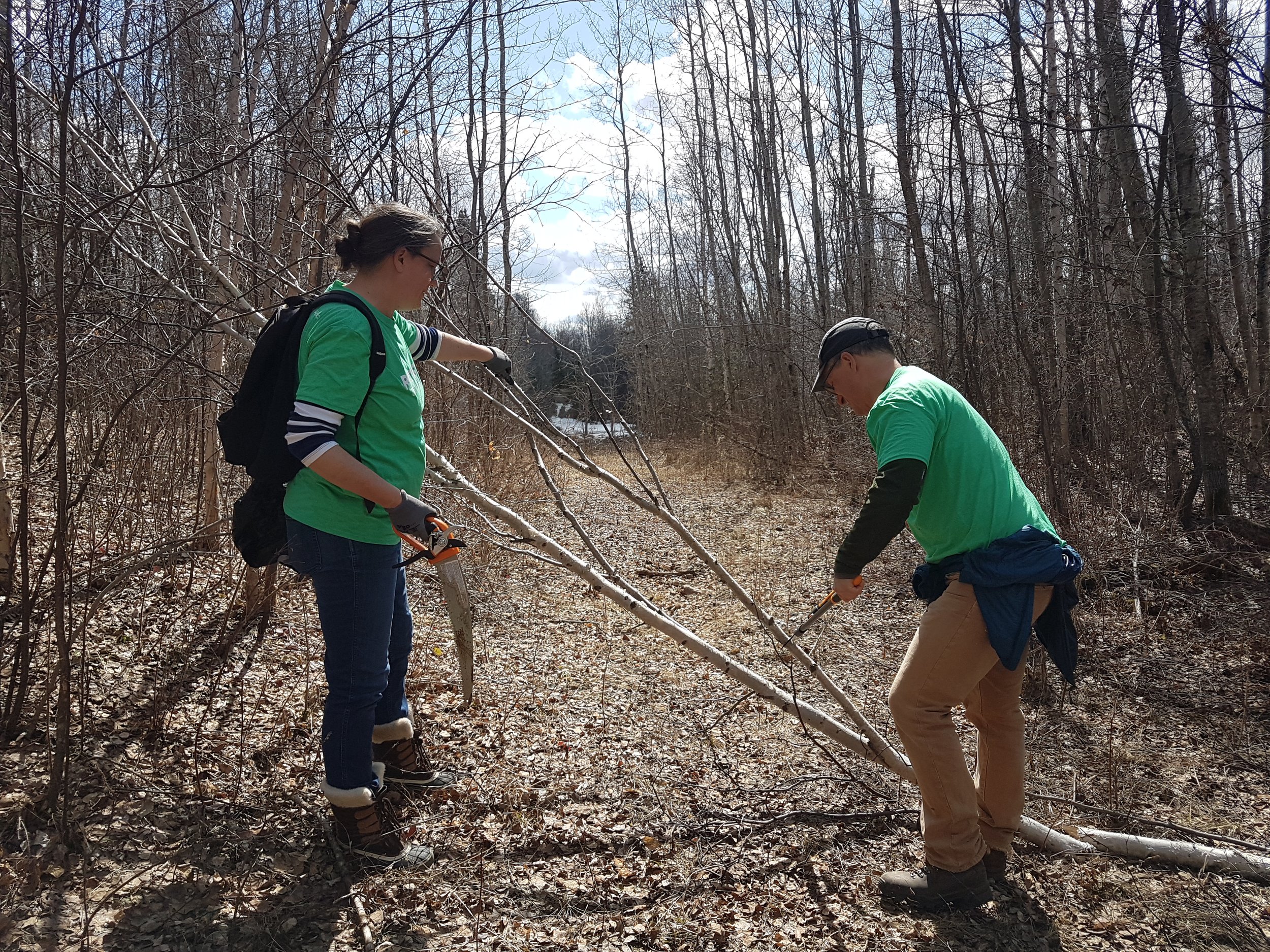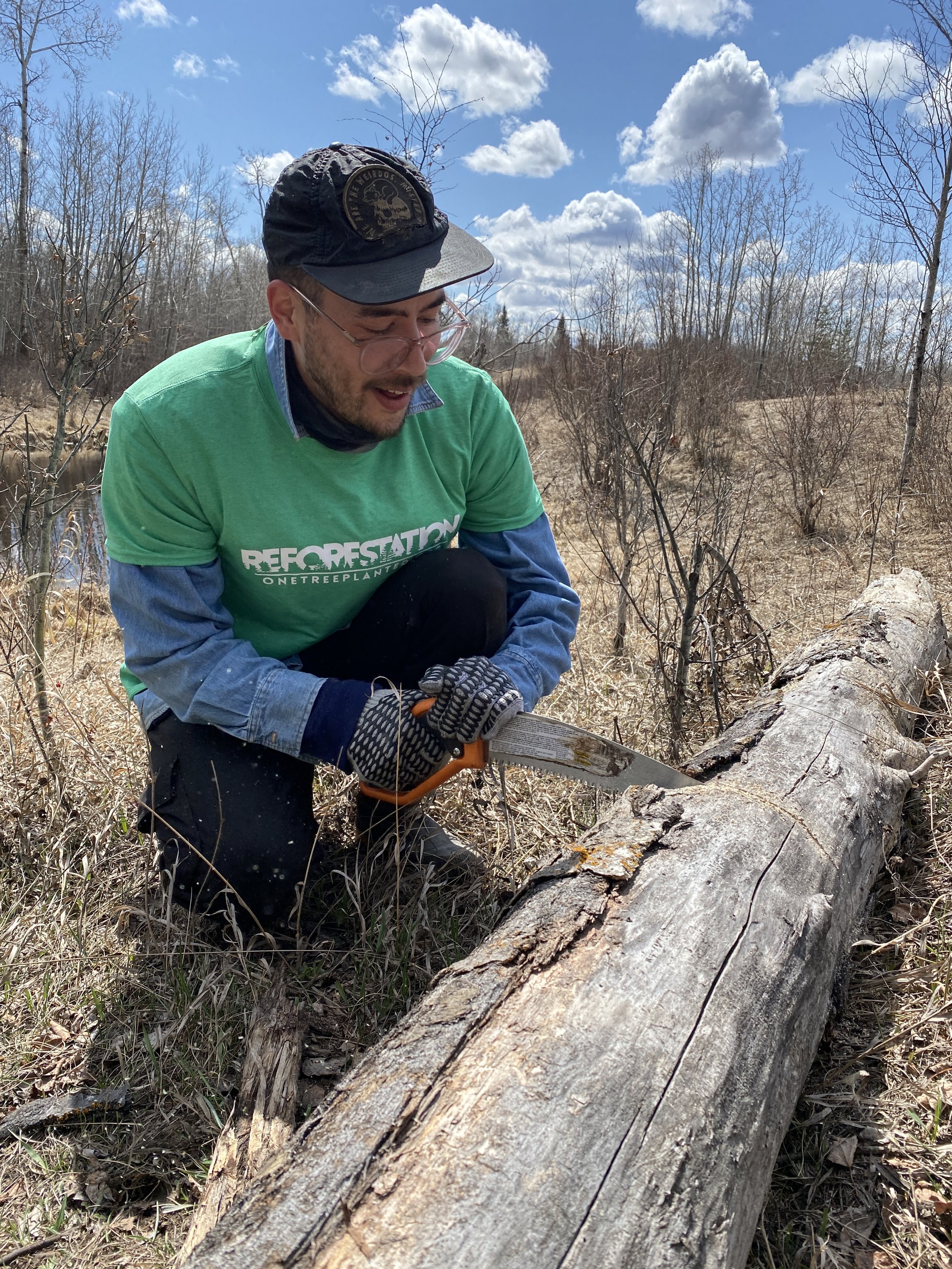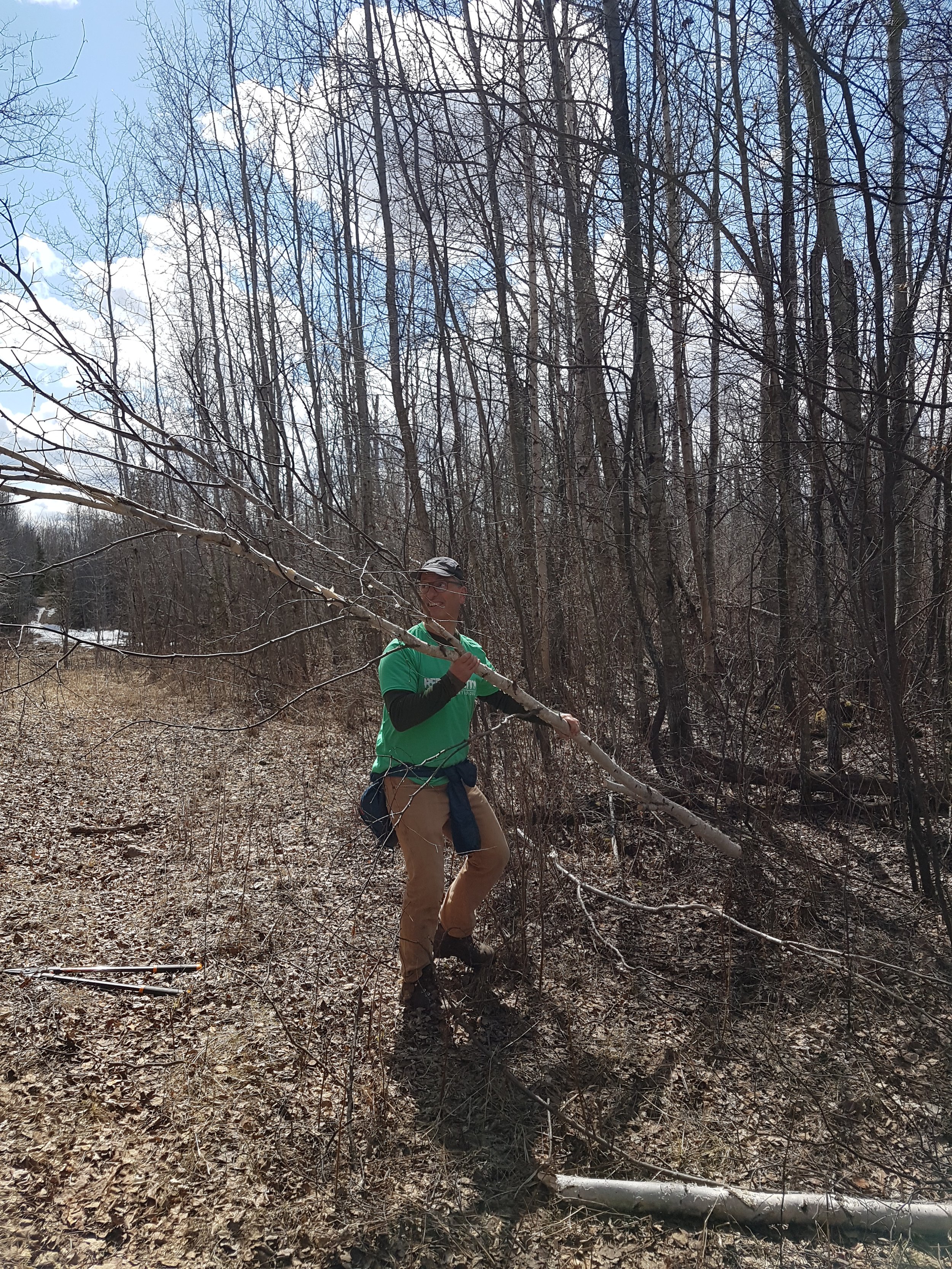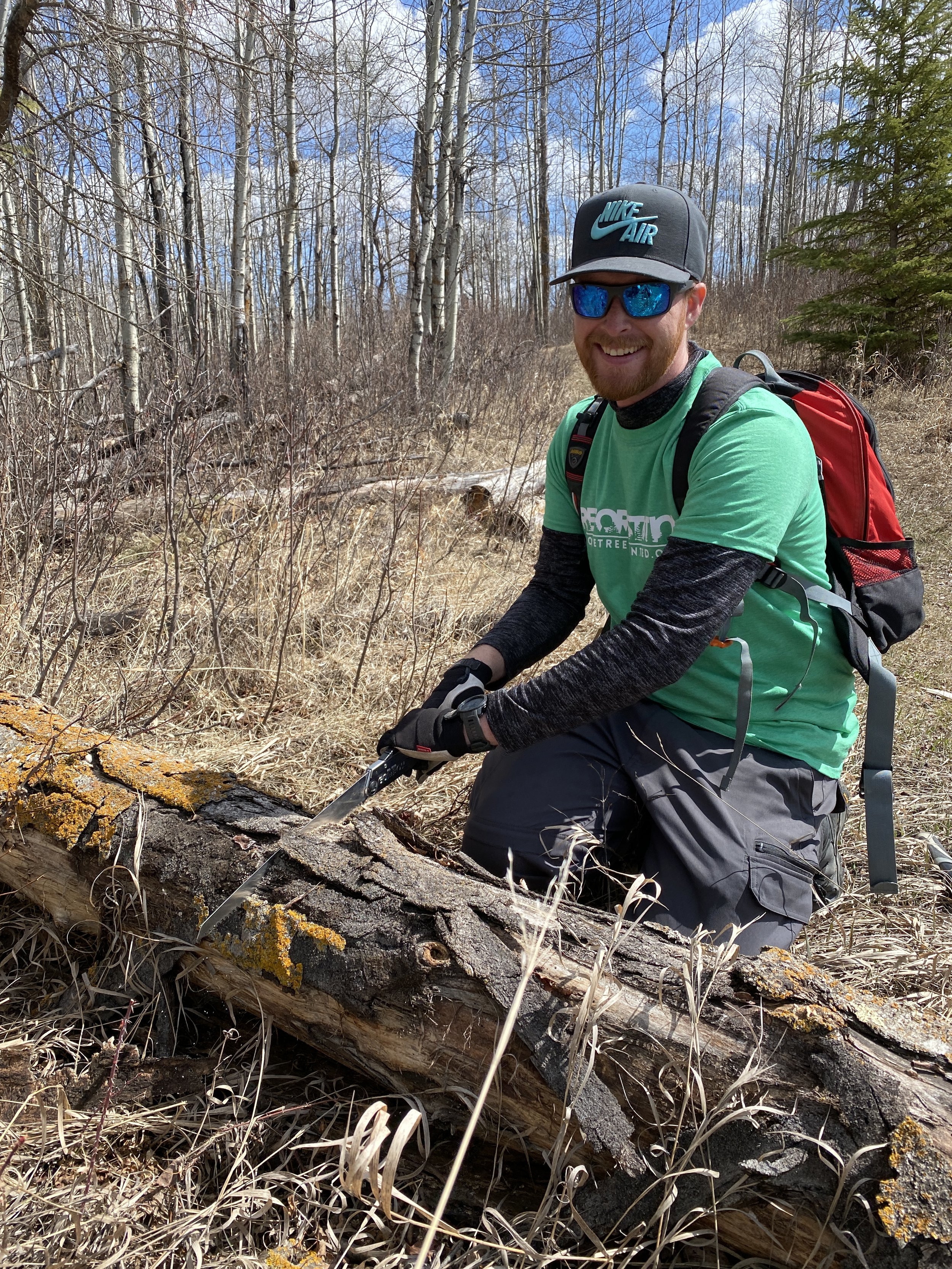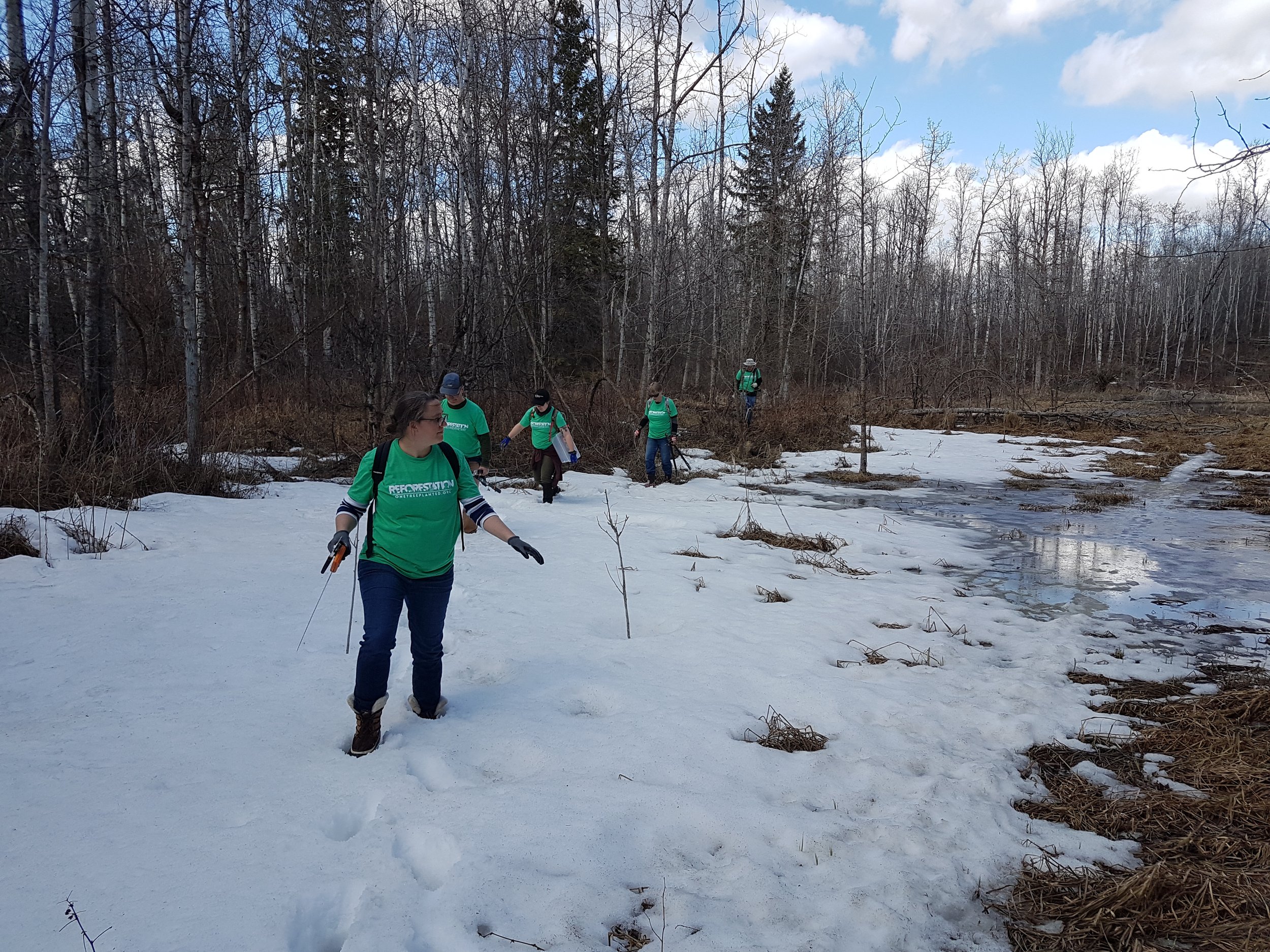EALT staff and volunteers enjoyed a beautiful day caring for our trees and trails at the Smith Blackburn Homestead last weekend.
We spent the morning carefully wrapping trees with heavy metal mesh fencing to protect them from beavers. This is the recommended management action when protecting trees from beavers because it is safe, effective, not overly time-consuming, and relatively inexpensive. Beavers aren’t great at climbing, so the wire works well to keep their teeth at bay.
While beavers can be important ecosystem engineers, excessive beaver damage can rapidly deforest an area. Increased beaver activity on this land has prompted us to take management actions to preserve some of the older, mature trees that provide critical habitat for wildlife. We made sure that the trees we selected were in close proximity to wetlands, as beavers generally choose trees within about 15m of water.
We selected 33 mature, older-growth trees to wrap with the wire. Mature trees are ecologically important and provide a number of ecosystem services. They filter air and water, sequester carbon, protect against flooding and erosion, and contribute to overall soil health. Mature trees also help support biodiversity for both plant and animal life. Many species of wildlife rely on old, large trees for food, shelter, and nesting sites - especially birds, small mammals, and insects.
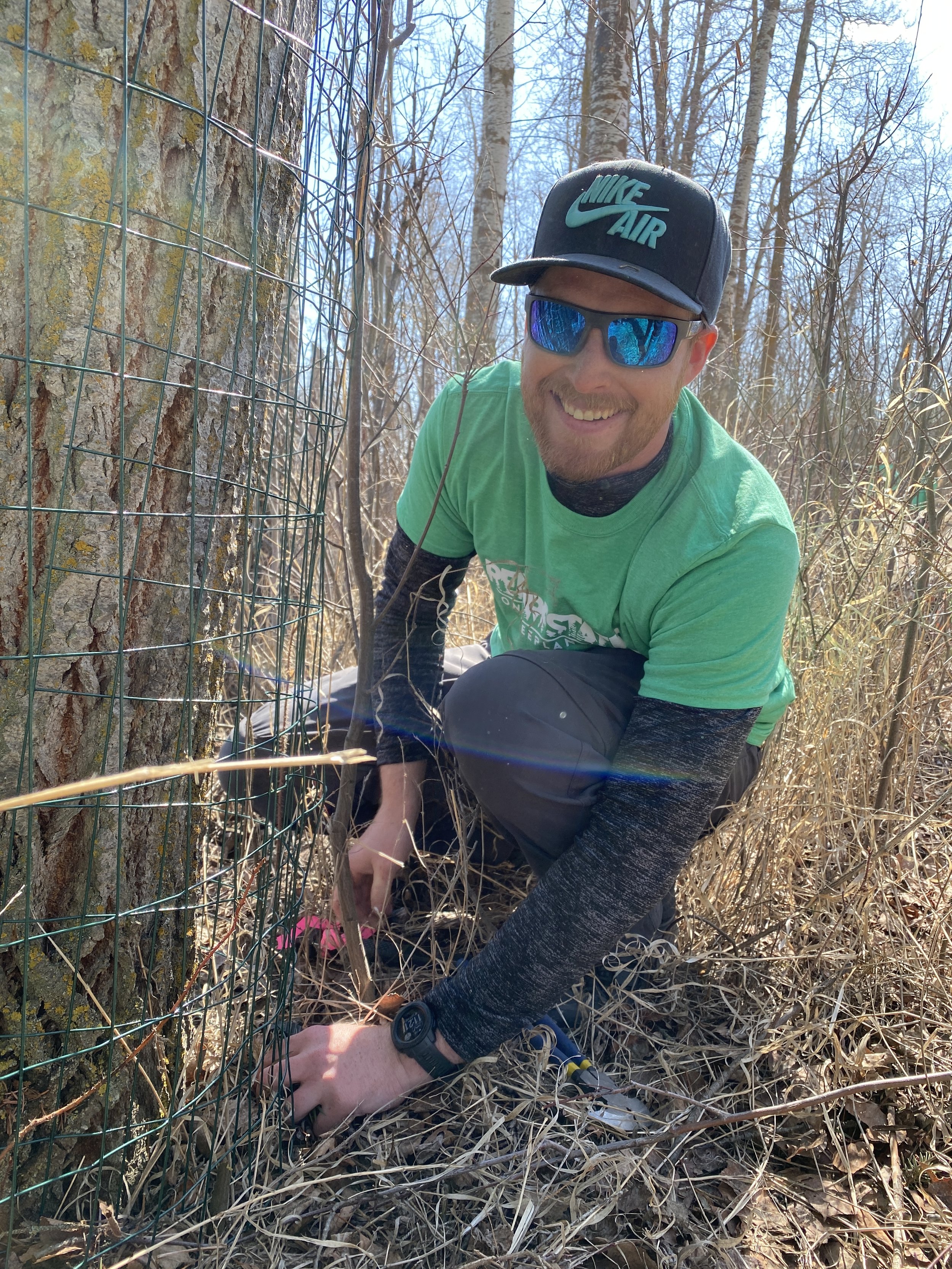
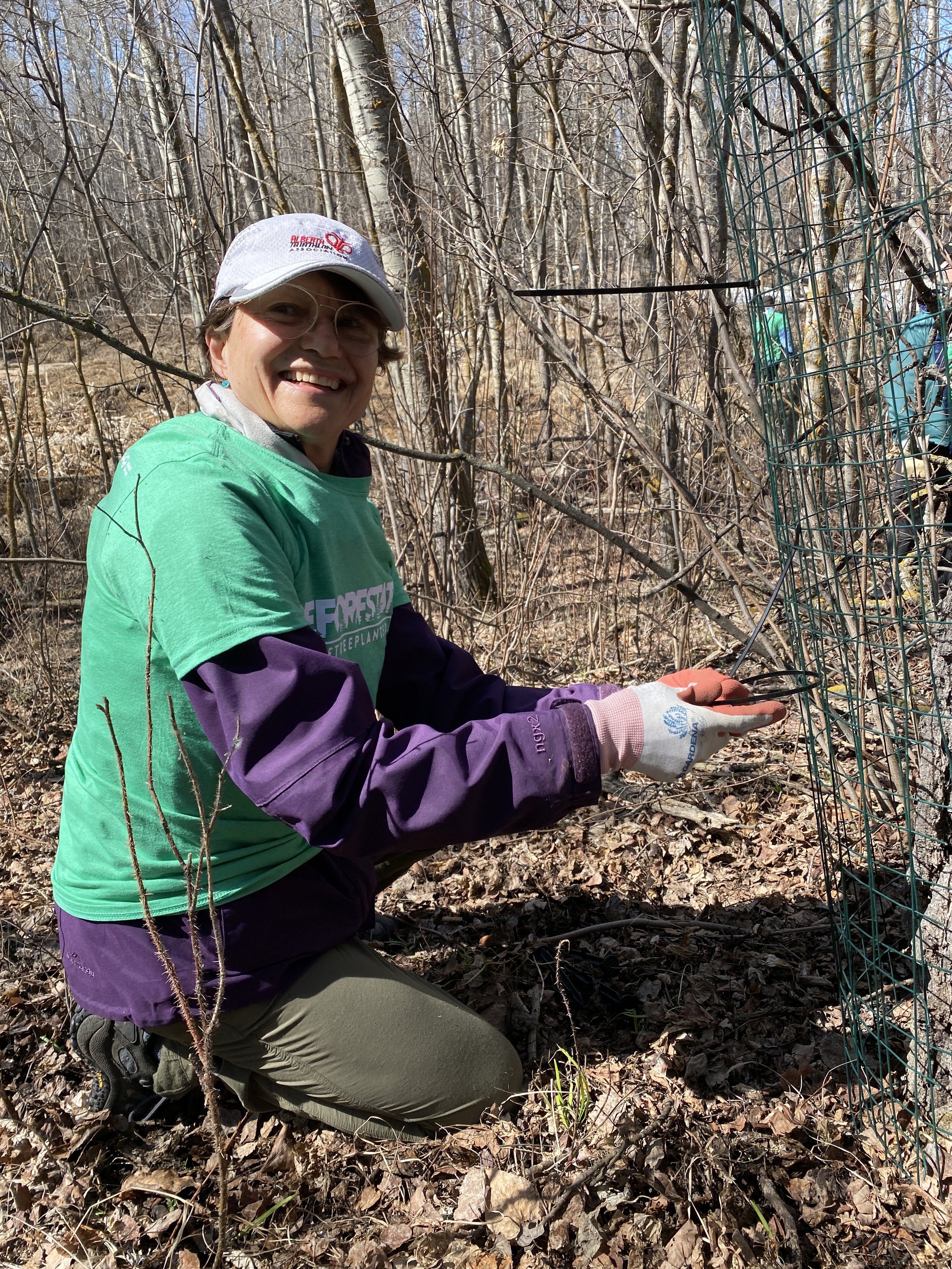
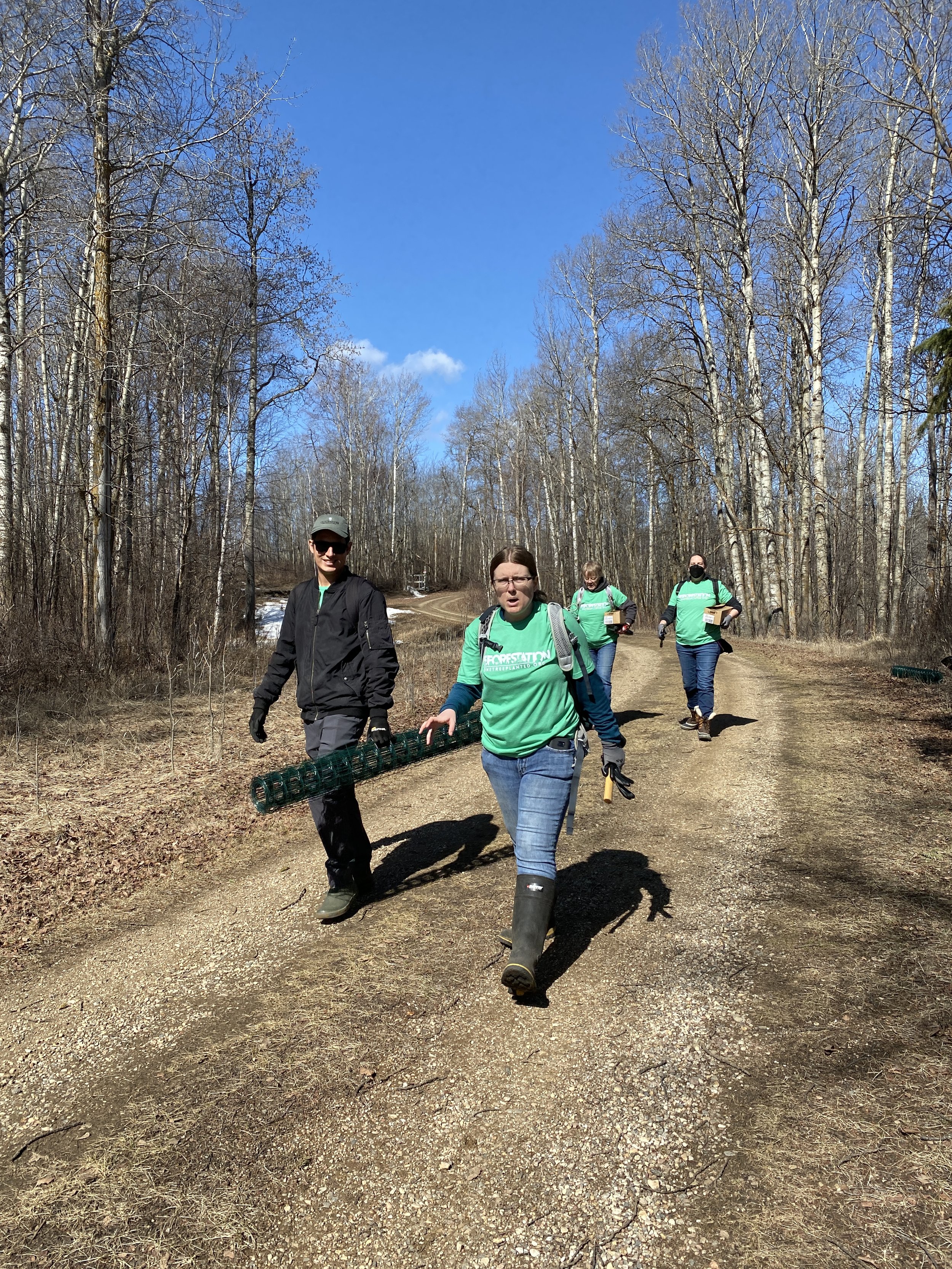
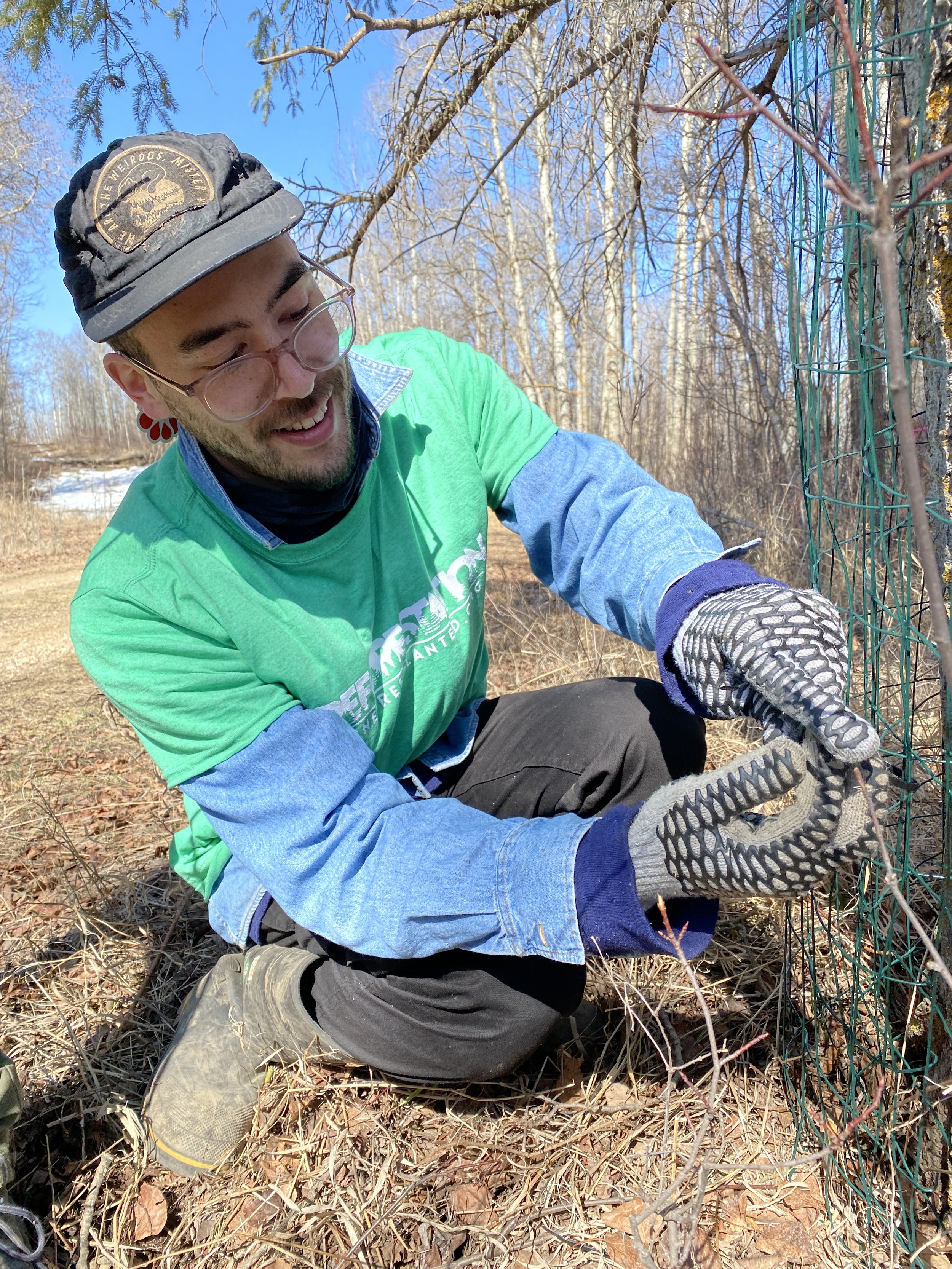
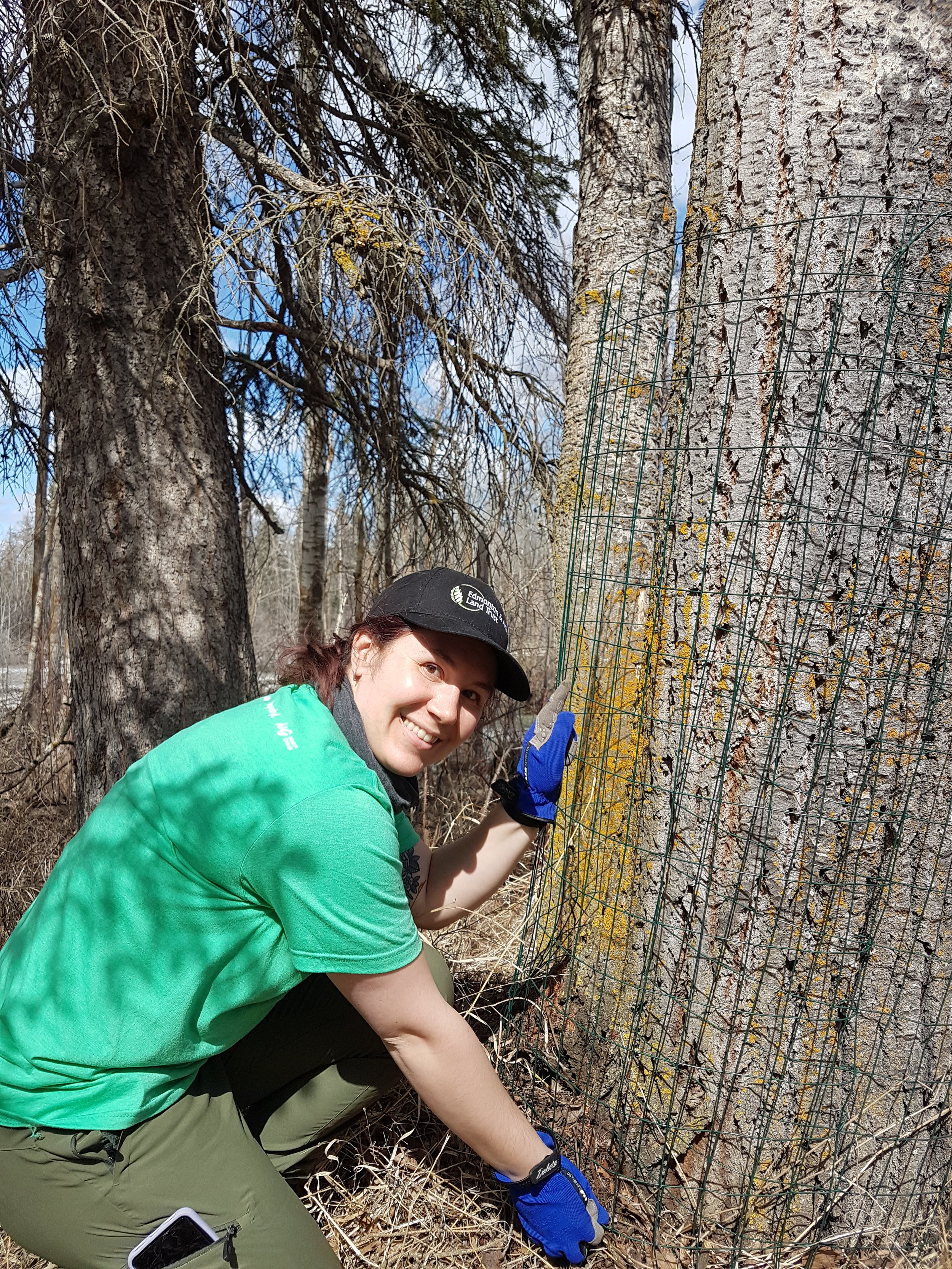
But don’t worry, we left lots of smaller trees as food and building materials for the beavers! Beavers also play an incredibly important role in the ecosystem - they improve water quality, control flooding, and create and maintain wetlands, which provides aquatic and riparian habitat that many other species rely on.
To explain to visitors what the wire is for and why this is an important land management and wildlife coexistence strategy, we also installed an interpretive sign.
After the trees were wrapped, we spent the afternoon cleaning up the trails and installing fence reflectors to make the land safer for wildlife. Staff and volunteers picked up trash, clipped overhanging branches, and removed fallen trees and other debris from the trails. It is important that we maintain the trails on our lands because having designated walking routes ensures that people can enjoy our conservation lands for low-impact recreation while also minimizing our footprint on the land.
We finished up the day by installing handmade fence reflectors on two of the barbed wire boundary fences to make them more visible to wildlife. We make our fence reflectors from vinyl siding and reflective tape, and install them in places where collisions from birds or mammals are most likely - often, this tends to be open places near water or forests. The Smith Blackburn Homestead is home to many different species of wildlife and we do what we can to make sure that the land is as safe as possible.
This event was supported by One Tree Planted, a non-profit organization focused on global reforestation.
Thanks to One Tree Planted and all of our amazing volunteers for helping us out with the day!



